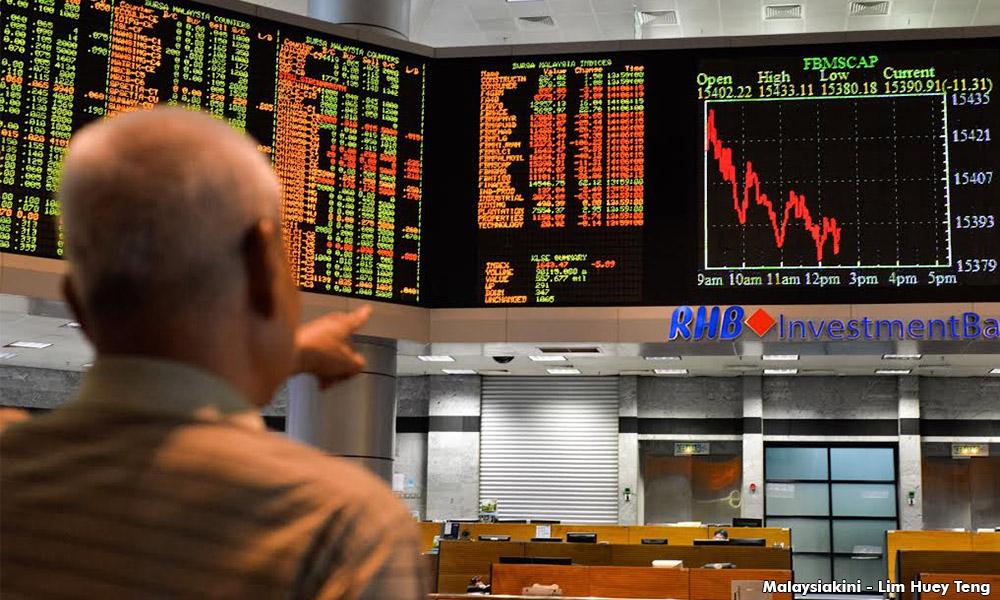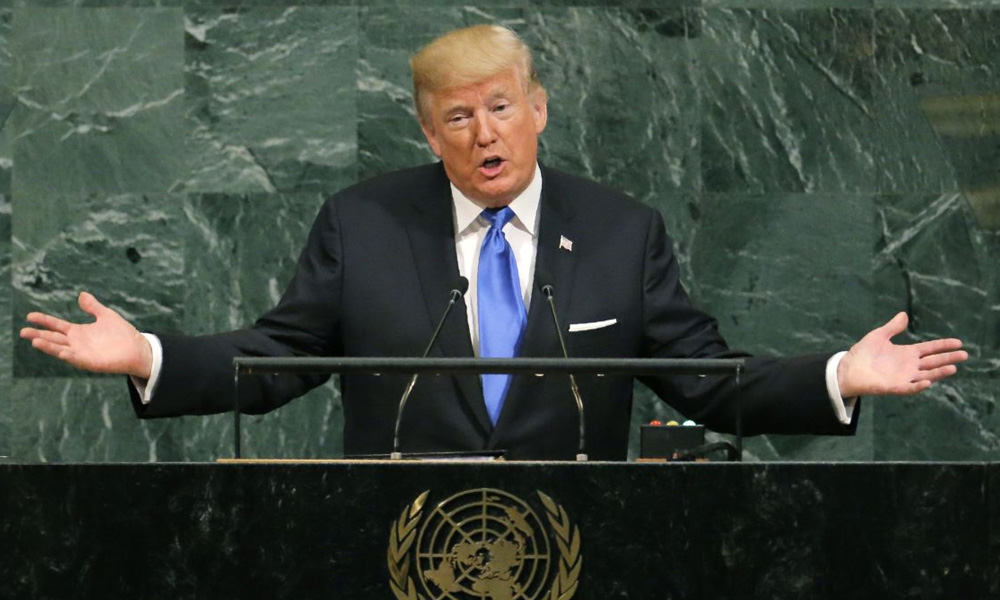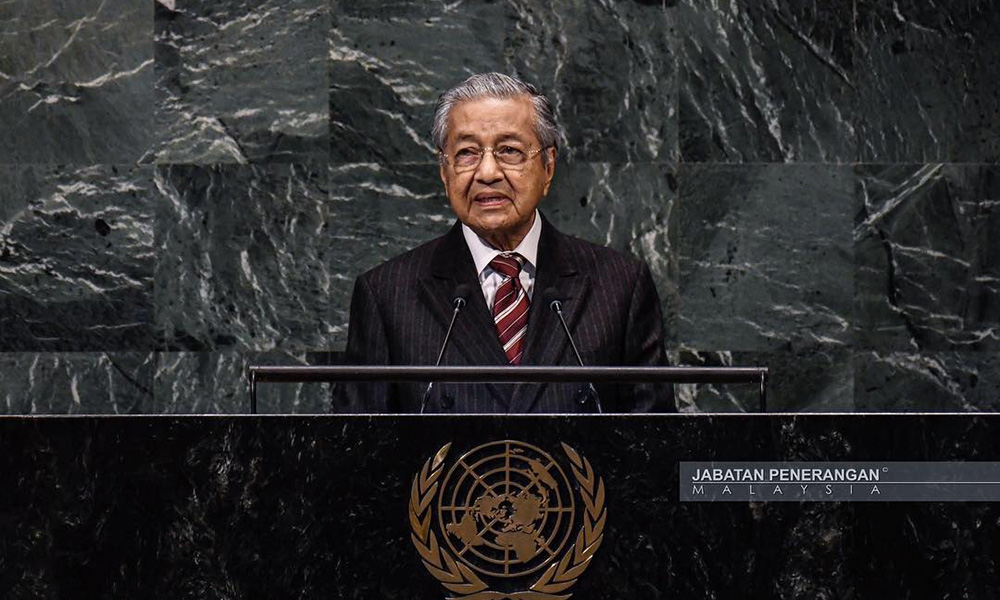
Published by Malaysiakini, images from Malaysiakini.
There are six countries that are currently in hot water, according to the World Bank. Malaysia, however, is not one of them, despite the prognosis of the World Bank that the growth will shrink to 4.8 percent in 2019 from the original prediction of 5.5 percent this year.
Such assessment, and consequently, reassessment, is normal in light of the trade war between the United States and China, two of Malaysia’s biggest trade partners. Nevertheless, what such analysis shouldn’t do is create a sense of unnecessary panic.
First of all, the information on the six-country analysis had originated from Geopolitical Futures in collaboration with Mauldin Economics, two of the most authoritative studies on world issues. Mauldin Economics has in fact taken a short- and medium-term approach to warning the markets of the impending global economic dangers produced by huge national debts. But, once again, Malaysia is not one of those countries at risk.
At US$280.6 billion, the national debt is unusually high. But these are debts that are not structural to the weaknesses of the Malaysian economy. They are debt due to the corruption and kleptocracy of Malaysia.
To a degree, there is a systematic, and systemic, anti-corruption efforts aimed at the top seven government-linked investment companies (GLICs) that dominate some 70 percent of the Kuala Lumpur Composite Index (KLCI). The liquidity in Malaysia will be sufficiently high in due course.
Strong foreign reserves
As things stand, the foreign reserves of Bank Negara stands at US$103 billion. It can last up to 7.7 months of imports. To the degree China is affected by the US tariff war, the People’s Bank of China has also agreed to pump US$110 billion into the Chinese banking system by the end of this year, to avert any downward pressures. And with more than US$3 trillion at its disposal, China has enough financial ammunition to keep staving off the effect of the US trade war.
Besides, the trade war is due to the dissatisfaction of President Donald Trump against China’s large trade deficit, which stands at US$520 billion. But the trade war is also launched to help the Republican members of the House of Representatives look more nationalistic around November 6, 2018, when the election of the House of Representatives must be held. Once the Republicans have won a majority in the US House of Representatives, there is every reason to believe that President Donald Trump will pull back from further tariffs against China.

Even if Trump were to remain recalcitrant, China can relocate some of its factories and manufacturing plants to countries like Malaysia, to avoid the high tariff walls of the US. Malaysia, in the medium to long run, can gain from China’s tit for tat with the United States.
While household debts remain high at 82 percent, one of the highest in Asia, the ringgit is buffeted by strong reserves in Bank Negara, too. Thus, since May 9, 2019, the ringgit hasn’t slipped to the levels of US$1 to RM4.59, as it once was towards the end of 2015, six months after the US Department of Justice had exposed the kleptocracy of 1MDB involving some US$4.5 billion.
Whether it be a systemic credit crunch (due to an overleverage of public debt), or, corporate debt fallout, Malaysia does not have the usual symptoms to warrant deep concern. Why? Well, Malaysia does not have the problem of “twin deficits” as occasioned by trade and fiscal deficits. Malaysia’s fiscal deficits would be balanced to zero percent by 2020 from a high of 2.8 per cent currently. Malaysia’s exports of commodities, especially rubber and palm oil, are at US$13 billion, according to a source from FGV Felda. Malaysia’s imports of food and livestock stand at US$13 billion too, which produces an even outcome.
In fact, the six countries that are facing currency pressures are Algeria, Argentina, Turkey, Mexico, Indonesia and South Africa. Of the six, Indonesia is closest to Malaysia. The rupiah has depreciated by 10 percent just last two months alone. But Malaysia has gone through a financial restructuring in 1998, and our banks have conformed to Basel I, II and III capital ratio and accountability regulations. There are no signs to suggest that the financial system of Malaysia is exposed to any structural or serious financial headwinds, from within the financial system or externally.
No threats of downgrades by rating agencies
As things stand, no credit rating agencies, such as Moody’s, Standards and Poor’s, and Fitch, have threatened to downgrade the Malaysian ratings. And, there has been no risk of downgrade despite an effort to clean up the financial system of the country. What Malaysia faces is pressures in public finance, where the government coffers had been totally fleeced by the previous administration.
But what is missing can be replenished through the sales and service tax (SST); with expected returns of at least RM 21 billion, and corporate taxes that are moderate and not more than 25 percent.
Malaysia has financial problems in the public coffers. But the government of Pakatan Harapan hasn’t tried to print money to solve its problems, thereby inducing more inflationary pressures to create runaway inflation.
In fact, Malaysia is trying to streamline its budget spending by eliminating any sources of corruption which demand a payoff of 30 percent ahead of any public and private partnerships. With the elimination of corruption, Malaysia’s economic growth will slow by a few decimal points but not enough to trigger a recession, which is the contraction of the Malaysian economy by two quarters nonstop.
If the World Bank Development Report is suggesting weaker growth, it ought to be said that the effects are due to the need to weed out the unnecessary corruption first. It is not caused or due to the mismanagement by Pakatan Harapan. Nor is it due to the structural weaknesses in the Malaysian economy.
In fact, the downward adjustment is due to the increase in the rates of the Federal Reserve Bank of the United States for the third time this year. The US economy is extremely strong and has now exceeded a growth rate of 3 percent. The Federal Reserve Bank has had to cool down the economy somewhat. The cooling down makes consumers more prudent, not wildly spendthrift. Such quality growth is to be encouraged in Malaysia.
Dr. Rais Hussin is President & CEO of EMIR Research, an independent think tank focused on strategic policy recommendations based on rigorous research.

